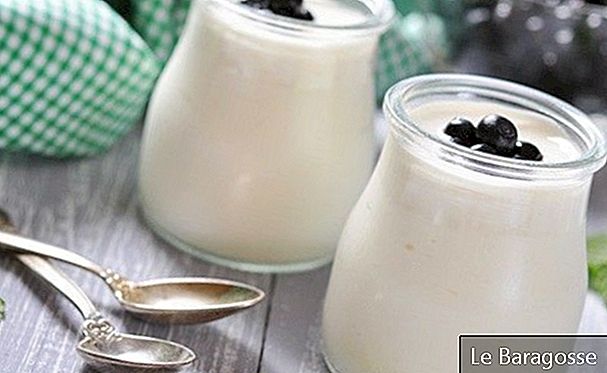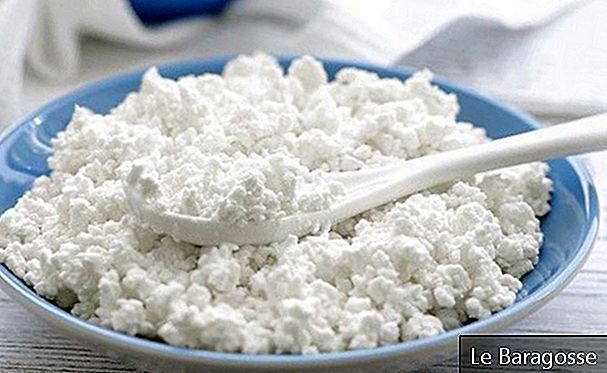
The term probiotic derives from Greek and means "pro-life". They are living microorganisms naturally found in the gut and that bring benefits to the organism, such as protection against infectious agents, disease prevention and preservation of the intestinal flora.
Poor diet, intestinal problems, chronic use of antibiotics and laxatives can damage the intestinal flora by considerably reducing the number of probiotic bacteria in the gut. In these cases supplementation and the inclusion of probiotic-rich foods in the diet become necessary. Know what they are, where they are found and how to include probiotic foods in your diet.
What are probiotics?
According to nutritionist and personal diet Flavia Germinari, "Probiotics can be defined as living microorganisms capable of benefiting the host through the balance of intestinal flora."
For Flavia, "about 80ml of probiotic source twice a day (totaling 160ml per day) already provides benefits." The nutritionist Tatiana Hirooka Guerra also advises that "the required dose varies between 1 - 10 billion cfu / dose (Colony Forming Units" around 100 million probiotic bacteria). Most yogurts and fermented milks guarantee this dose in each package.
Where are probiotics found?
"Probiotics studied and used in humans are lactic acid bacteria (Lactobacillus, Bifidobacterium, Streptococcus and Enterococcus) and yeast (Saccharomyces boulardii) commonly found in milk, fermented milks, yogurt and curds," says Flavia. It is important to remember that because they are derived from milk, these foods contain high concentrations of fat, so it is suggested to choose foods with reduced fat and sugar contractions to avoid weight imbalance.
In addition, Tatiana advises that there are currently on the market - tablets, capsules and sachets that contain the bacteria in lyophilized form, which do not require refrigeration to stay alive unlike bacteria found in fermented milks or yogurts that can be lost if not. are under refrigeration ?.

Despite the increased availability and easy access to these foods, consumption should not be indiscriminate, as each gender acts differently. Below are ten suggestions for probiotic-rich foods to include in your diet.
1. Yogurt: In yogurt sugar is transformed into lactic acid through bacterial fermentation. Its consumption is highly recommended due to its nutritional properties and the dairy yeast present in the composition.
2. Fermented Milk: Food obtained through milk fermentation by its own yeasts. In its production, there is a decrease in milk pH. It is considered a functional food and contains probiotics in considerable quantity.
3. CheeseFood made from the coagulation of milk through bacterial cultures that turn milk sugars into lactic acid, as occurs in yogurt. Besides being rich in probiotics, cheese is a good dietary supplement, rich in protein, calcium and phosphorus.
4. Curd: Curd or curdled milk is the solid part resulting from the coagulation of milk. It contributes to the balance of the intestinal flora by promoting its regularity. It is very rich in probiotics.
5. Sauerkraut: Sauerkraut is a canned fermented cabbage. Besides being a source of vitamin C also has lots of probiotics. The most traditional preparation recipe is one that uses only cabbage, water and salt.
6. Miso: Miso is a traditional ingredient of Japanese cuisine made from the fermentation of rice, barley and soy with salt. The result is a paste mainly used to make miso soup. Due to the fermentation process is also rich in probiotics.
7. Shoyu Sauce: The soy sauce is made from a mixture of microorganism-fermented soybeans. It can be used to season salads and to prepare some dishes.
8. Kefir: Unlike yogurt that is fermented only by lactobacilli, kefir is fermented by thirty-seven different types of microorganisms in its colony, including yeast, which guarantees a probiotic-rich food.
9. Probiotic Capsules: Today a series of complexes rich in probiotic bacteria are available on the market.They are indicated for those who have difficulty inserting dairy foods into their diet. A plus point is that the capsules do not need refrigeration. Consumption should be done under medical advice.
10. Soluble Probiotics: Like capsules, soluble probiotics have also become popular. The preparation happens like instant juices, just mix the contents of the sachet in 200ml of water. They promise to supply the body's daily need for probiotics.
In addition to the foods mentioned above, there are currently recent studies that associate the consumption of mayonnaise, meat, pates, vegetable seed extracts and fish to the increase of probiotics in the body.
What are the benefits of probiotics in the body?

In medicine, probiotics are used in the prevention and treatment of disease. According to nutritionist Tatiana, several studies report the benefits attributed to probiotics in preserving intestinal integrity and mitigating the effects of intestinal diseases such as diarrhea and inflammatory bowel disease. "There is also evidence that probiotics stimulate the immune response, modulating allergic reactions, improving women's urogenital health and blood lipid levels," he adds.
Synthesis of B-complex vitamins, calcium absorption as immunomodulators, inhibition of carcinogenesis (tumors), reduced cholesterol concentrations, and increased lactose tolerance and digestibility are also some benefits cited by nutritionist Flavia.
Despite the many health-enhancing benefits, probiotic consumption should be associated with healthy lifestyle habits. Talk to your dietitian or doctor before making any changes to your diet. Follow a balanced diet and exercise regularly.
Heal the Gut with Sauerkraut (Easy-To-Follow Recipe from Summer Bock) (May 2024)
- food
- 1,230
















